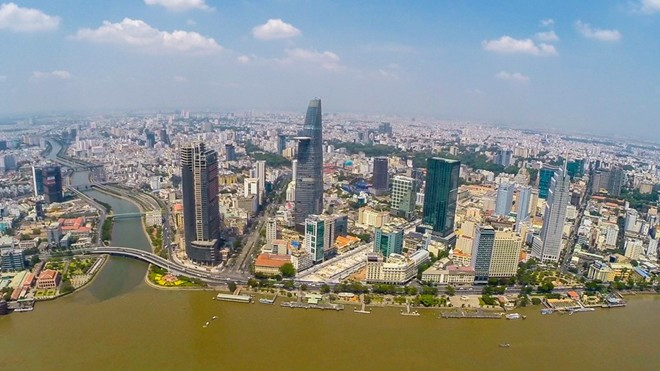VN needs to seize every opportunity to gain greater achievements in 2019
VGP - Despite comprehensive successes in all aspects in 2018, there is no room for complacency and Viet Nam needs to grasp every opportunity in order to accelerate economic growth and achieve better and more sustainable results in 2019.
 |
|
A corner of Ho Chi Minh City |
The exchange rates and interest rates were stable. Industrial production and retail sales posted decent growth.
Across the country, more than 10,000 new enterprises were established while nearly 8,500 resumed their operation, adding more than VND635 trillion (US$27 billion) to the economy. The number of newly formed enterprises dropped in comparison with the same month of 2018, but registered capital soared by a record 53.8%. Those returning to business also shot up by 84.5%.
In addition, Viet Nam welcomed more than 1.5 million visitors, up 5% from a year earlier. Total disbursement from the state budget also increased 8.5%.
The Comprehensive and Progressive Agreement for Trans-Pacific Partnership (CPTPP) came into force on January 14, 2019 and the imported commodities of Viet Nam along with those of six other member nations enjoy a substantial tariff reduction under the commitments outlined by the CPTPP agreement.
The effects of Free Trade Agreements (FTAs) are projected to have a major impact on the Vietnamese economy and the activities of businesses.
According to calculations, average tariffs will be reduced by over 60% during the first stage and will be slashed further to 80% over the course of the next three years.
The above-mentioned positive changes are a favourable start for Vietnam in fulfilling its socio-economic targets for 2019.
Opportunities
In order to prepare for taking up new opportunities, the leaders has considered strengthening the macroeconomic foundation and stimulating growth as the most important tasks in 2019.
“Viet Nam’s partaking in and early adoption of the CPTPP demonstrates its strong commitments to broad-based, comprehensive international reform and integration, affirming the country’s important role and geopolitical status in Southeast Asia and the Asia-Pacific region,” stated Party General Secretary, State President Nguyen Phu Trong, in his proposal on the adoption of the CPTPP to the NA.
The government also has adopted Resolutions 01 and 02 with specific measures to realise these tasks. In these resolutions, the government puts an emphasis on bolstering economic growth, curbing inflation and ensuring major balances.
According to a government report delivered to the NA, the CPTPP will greatly benefit Viet Nam as combined GDP of the CPTPP member countries is about $11 trillion, or 13.5% of the global GDP, including Japan as the world’s third-largest economy with its total export-import turnover is over $10 trillion.
Under a study conducted recently by Viet Nam’s Ministry of Planning and Investment (MPI), the trade agreement can expand Viet Nam’s GDP and export turnover by 1.32% and 4.04%, respectively, until 2035. Total import turnover will also likely rise by an additional 3.8% until 2035.
The Prime Minister has asked each minister and sector leader to pay special attention to realising the targets and tasks set out for their fields of management and to conduct monthly reviews in order to come up with appropriate policies.
By Vien Nhu

